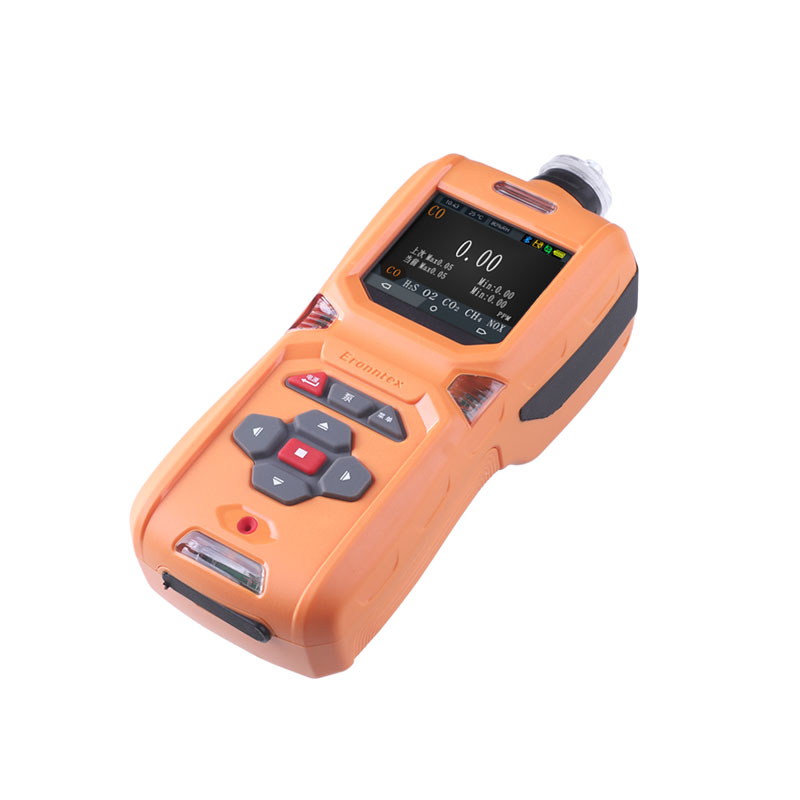- English
- Español
- Português
- русский
- Français
- 日本語
- Deutsch
- tiếng Việt
- Italiano
- Nederlands
- ภาษาไทย
- Polski
- 한국어
- Svenska
- magyar
- Malay
- বাংলা ভাষার
- Dansk
- Suomi
- हिन्दी
- Pilipino
- Türkçe
- Gaeilge
- العربية
- Indonesia
- Norsk
- تمل
- český
- ελληνικά
- український
- Javanese
- فارسی
- தமிழ்
- తెలుగు
- नेपाली
- Burmese
- български
- ລາວ
- Latine
- Қазақша
- Euskal
- Azərbaycan
- Slovenský jazyk
- Македонски
- Lietuvos
- Eesti Keel
- Română
- Slovenski
- मराठी
- Srpski језик
How to ensure the service life and reliability of the four-in-one gas detector?
In many fields such as industrial production, environmental monitoring and safety testing, the four-in-one gas detector, as an important safety device, plays an indispensable role. It can detect multiple harmful gases at the same time, provide instant safety information to staff, and effectively prevent safety accidents such as poisoning and explosion. So how to ensure the service life and reliability of the four-in-one gas detector? The following is the sharing of the editor of Zetron Technology.

To ensure the service life and reliability of the four-in-one gas detector, you can start from the following aspects:
1. Regular calibration and maintenance
1. Regular calibration:
According to the manufacturer's recommendations, calibrate the detector regularly to ensure its accuracy and reliability. Calibration can be performed using standard gas or professional calibration equipment.
The calibration cycle is generally based on the frequency of use and environmental conditions, but it is usually recommended to calibrate at least once a year.
2. Regular maintenance:
Maintain the detector regularly, including cleaning the sensor, checking the battery power, replacing aging parts, etc.
When cleaning the sensor, use appropriate cleaning agents and tools to avoid damaging the sensor surface.
2. Correct use and storage
1. Correct use:
Before using the four-in-one gas detector, you should carefully read and understand the manufacturer's instruction manual and use it correctly according to the requirements of the manual.
Avoid using it in an environment beyond the measurement range of the detector to avoid damaging the sensor or affecting the measurement results.
2. Proper storage:
Store the detector in a dry, ventilated, dust-free place to avoid impact, falling or other physical damage.
Avoid exposing the detector to extreme temperature or humidity conditions to avoid affecting its performance and life.
3. Battery management
1. Check the battery power regularly:
Make sure the battery power is sufficient and avoid using the detector when the battery power is low to avoid affecting the measurement results or damaging the battery.
2. Charge or replace the battery according to the manufacturer's recommendations:
Use the charger and battery recommended by the manufacturer for charging or replacement, and avoid using incompatible batteries or chargers.
4. Environmental control
1. Reduce environmental pollution:
When using the detector, try to keep the environment clean to avoid dust, oil and other pollutants adhering to the detector, which will affect the accuracy of the measurement results.
2. Control temperature and humidity: When using the detector, pay attention to controlling the temperature and humidity of the environment, and avoid using it under extreme conditions to avoid affecting the performance and life of the detector. 5. Training and records 1. Train operators: Provide relevant training to operators to ensure that they are familiar with the operation and maintenance methods of the detector, as well as precautions for safe use. 2. Record usage: Record the usage, calibration and maintenance records of the detector, so as to find and solve problems in time. 6. Regular replacement and upgrade 1. Regularly replace sensors: The sensor is the core component of the detector, and its performance directly affects the accuracy of the measurement results. According to the manufacturer's recommendations, replace aging sensors regularly. 2. Pay attention to product upgrades: Pay attention to the product upgrade information released by the manufacturer, and promptly understand and adopt new technologies and methods to improve the performance and reliability of the detector. In summary, the service life and reliability of the four-in-one gas detector can be ensured through regular calibration and maintenance, proper use and storage, battery management, environmental control, training and records, and regular replacement and upgrades. These measures not only help to extend the service life of the detector, but also improve the accuracy and reliability of its measurement results, providing safer and more reliable protection for work and life.







